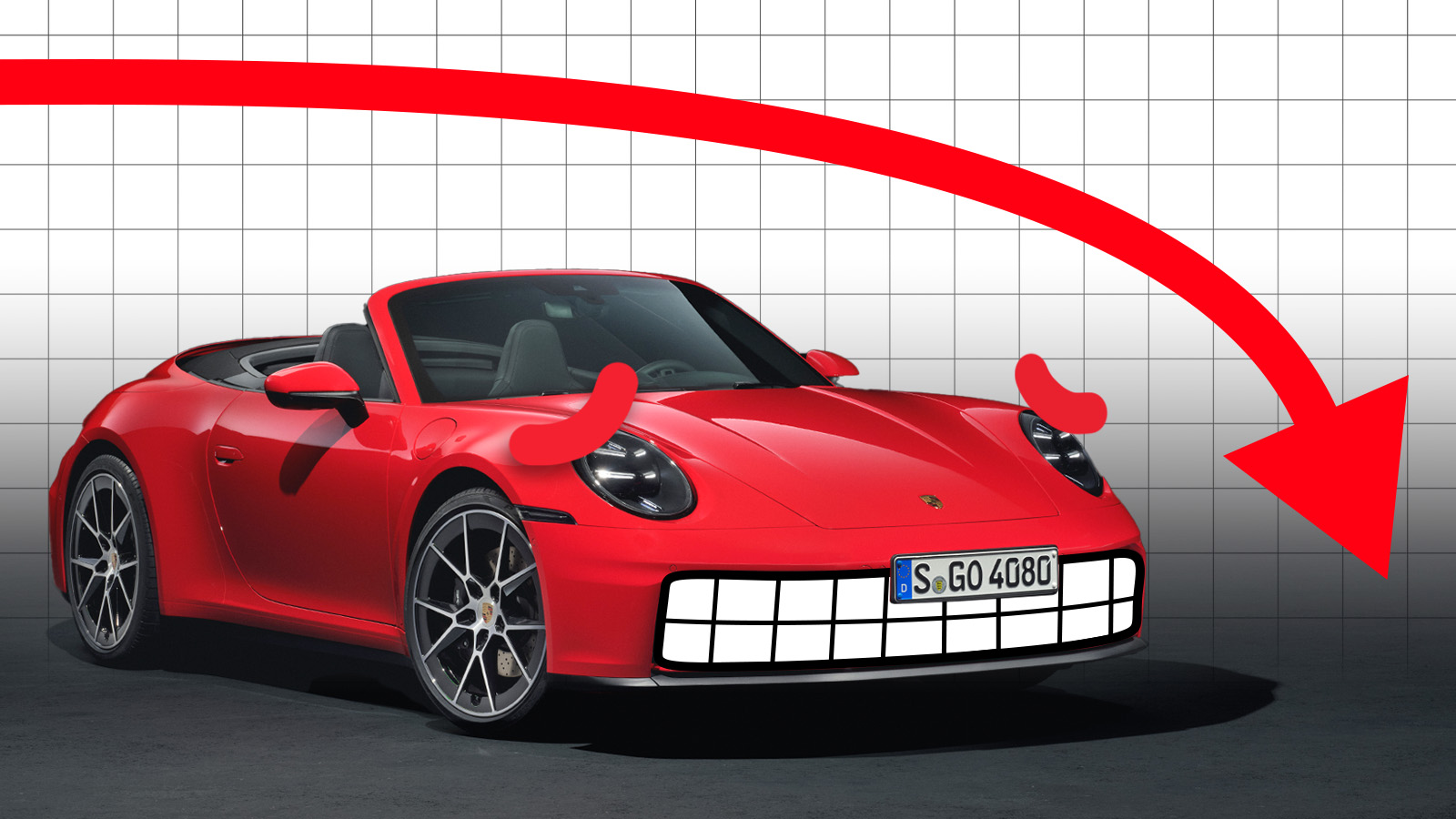I always liked these little Honda N600s. These were the first cars to be officially exported to America by Honda; sure some earlier S500 and S600 roadsters had been brought in, but this little Mini-like car was the first actually-approved-by-Honda one. This was also Honda’s first front engine/FWD car, and in that sense was really the true template for Hondas to come. I think they’re really charming little things, too, and in that picture up there it almost feels like a wildlife photo, a wild N600 scrambling up a grassy hill to feed on a natural petroleum seep, just out of frame. But what I especially like about this old brochure is the technical depth it gets into.

It’s not a huge amount of technical depth, and that page up there is pretty conventional for a car brochure of the era, around 1967 or so. It’s very rational and straightforward, showing the features of this little economy car. It’s what they decided to put on the last page that impresses and confuses me:

Look at this: you’ve got charts for accelleration and speed, with different plots per gear, and a whole engine performance chart with brake horsepower (BHP) and torque curves, along with fuel consumption. This is all fantastic info to have, but are the prospective buyers of a 45 bhp economy/city car looking for this kind of information? Most brochures of this era didn’t include anything like this, and those that did tended to be for actual performance cars with triple the power, not some little air-cooled two-cylinder wheeled box. It’s amazing!
Were people choosing their bottom-of-the-market little cheap cars based on torque and power curves? Maybe!
Also interesting: these used an inline twin with a 360° crankshaft angle, which means both pistons moved in unison, just firing at different times. That always seemed odd when I picture it in my head.








I owned one of these little gems in Germany. It was a total blast to drive and obviously very fuel efficient. It only had one major technical glitch, that being that when confronted by any grade steeper than about 30 degrees required backing up said grade due to fuel starvation (probably a fuel pump issue).
Another issue that I had to deal with was that when I bought the car the license plate had the prefix “SGM” which was supposedly reserved for Sergeant’s Major. Needless to say my Battalion SgtMaj took a very dim view of a SSG with this plate. This later cost me a windshield because some of the troops didn’t realize that good ole SSG “Opa” was the owner and not some random SgtMaj.
Another memorable event was attending a Fasching/Mardi Gras ball with another couple, all of us in full costume regalia. Our retinue consisted of two rather large German men and two German women in extravegrant ball gowns all inside the tiny N600! We had to store our sabres in the dimutive trunk.
I sold the little beast to another GI to make room for a 1970 Audi 75 Variant (wagon) after I got my one and only DWI and had to turn over driving duties to my wonderful wife.
Didn’t you read the brochure? Right there, in the Tech Specs, forth line:
Climbing angle: 20*
I see these kinds of curves in most JDM brochures of the era – I think they simply didn’t have the budget to rethink their brochure methods for the US market.
Also, is “constantmesh” really one word?
I think this was Honda asserting the car was not, as we said in the day, “Jap crap.”
It is very much like a repackaged Fiat 500. Similar size, weight, and interior with double the horsepower… and refinement.
More like a Mini – engine and driving wheels are up front.
Hence “repackaged”. The shape, size, and inside features are more like a 500.
Which explains the refinement.
I am so in love with Honda of this era… Perfection
“Also interesting: these used an inline twin with a 360° crankshaft angle, which means both pistons moved in unison, just firing at different times. That always seemed odd when I picture it in my head.”
This is the arrangement on a few motorcycles, usually called a parallel twin, or sometimes a British twin I think.
One evenly power timed power stroke per revolution, pretty intuitive and pretty common.
The Fiat 500 did it first. When I replaced the head on mine I was confused because I always assumed the cylinders went up and down alternatively.
Unless I’m buying a kit car I sure hope any new car I buy would be “Complete”. Not sure why that would be a selling point.
I find it interesting that the engine curve shows around 43hp at 6500 rpms but the text says 45 at 7000.
These are cool and adorable cars, and I’d happily drive around in one as long as I fit.
The reference of 45hp @ 7K was for Rickshaw Racing. Only good for competitions of 1 city block or so. – Cosmo Kramer
I remember checking these out at the local FORD dealer. Yes, FORD.
Back in the days of real car testing magazines.
The tech specs are almost an identical copy of how ROAD & TRACK would publish the specs of tested cars.
It was a different world.
And when the Civic was introduced it seemed huge compared to these.
That’s an interesting point, it looks exactly like an R&T article.
Wouldn’t it be fun to autocross one of these today?
A reminder that Soichiro Honda was an engineer before anything else?
I knew a family who had one of these, the dad was a Lockheed engineer. Maybe Honda was looking to get into the market with their odd little car by pleasing such types with spec charts.
A guy in college had one but the starter was shot. It is the world’s easiest car bump start.
The 0º crank angle might make for more vibration (unless carefully balanced), but it would give you an even firing pattern.
bup_bup_bup_bup_bup.
Other angles don’t allow that. Think of the characteristic Harley warble:
bupbup__bupbup__bupbup__bupbup.
I believe it’s “potato potato potato”
The owners manual for the Porsche 945 is very similar. It even has acceleration plots for different hill climb grades.
Very understandable for a Porsche, they want lots of charts and numbers to brag about because they sure as hell can’t brag about looks
Well, then that makes perfect sense, as this car would’ve been a direct competitor. 🙂
0-60: YUP!
Yes, but a very entertaining 0-60!
The shifter sprouting out from under the dashboard prepared me for later excursions in a Citroen 2CV.
Is a 19 second quarter mile run actually all that bad for a car of that power and size? I’d say not.
No complaints here. Would be a hilarious daily merge onto the highway though. You’d be bending the floorboard asking for more.
I owned two of these — a standard N600 followed by a Z600 “coupe.” Put a lot of miles on them, and made several L.A.-to-San Francisco (and back) trips in the N. I learned to tuck in behind 18-wheelers and pick up a little speed on the Interstates….
They were actually marvelous little cars, and I wouldn’t mind having one today. The only trouble I ever had was a bent valve in the N. Which, BTW, was entirely my fault, as I wound the bejeebers out of that little engine. Got decent fuel mileage, too.
They were also inexpensive. The N was a whole $1295, and IIRC the “coupe” was $1895. Nicely equipped, too: the had front disc brakes an real — if thin — carpeting. I briefly drove a Chevy Vega that had front drums and rubber floor mats, as well as a rougher engine.
I’ll stop there, as the memory makes me really want another!
David Attenborough voice
This is the N600. A diminutive example of its kind, but not to be underestimated. It was introduced to the North American continent after stowing away aboard a trans-Pacific cargo ship, and had no natural competition on these shores. For decades it and its fellow Hondas have been rapidly consuming the native market. Breeding pairs of local varieties of the genus were first pushed out toward Mexico and Canada, then recently went extinct altogether. Only the larger truck and SUV native species still remain.
They even gave a BSFC curve at full load!
The only way to improve this would be to give a full BSFC map.
Diesel engine brochures for commercial trucks used to show a full load BSFC curve in the 60’s and 70’s, then the practice seems to have petered out. It is actually useful information in a low power to weight ratio vehicle – you’re going to spend an awful lot of time at wide open throttle. It can help you understand when you should up and down shift for best efficiency.
It is interesting that this engine shows best BSFC way up at 6000 RPM. Typically best BSFC and peak torque correspond pretty closely, but not in this case. Maybe it’s an air-cooled engine heat loss thing? I further wonder if SAE-gross power testing of this engine would have included the cooling fan – that would be a cheeky omission, and would change both the power and BSFC curves quite a bit.
I remember the first time I saw one of these. It was parked on someone’s property and I could only see the rear third of the car, had no idea what it was, but I was obsessed. Not sure how I figured it out, but you can kind of see the embryo of a 1st-gen Civic in there.